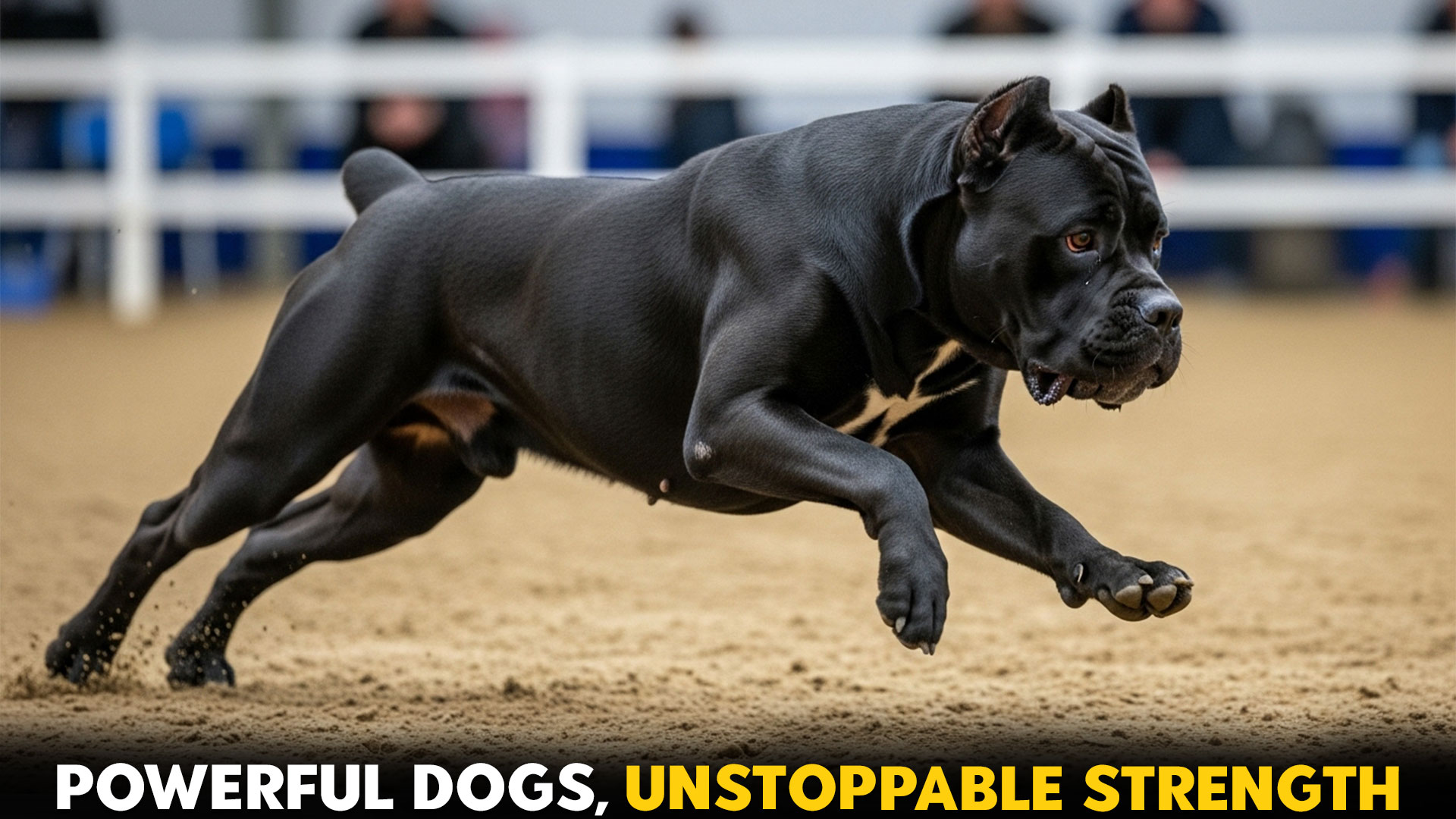Dogs are built for amazing feats of strength and movement. A 2024 study found that larger dogs can move across obstacles with fewer steps and better balance than smaller ones, showing just how powerful their bodies really are.
In this article, we’ll look at the biggest breeds that combine size with surprising agility. These dogs are more than just heavy—they’re strong, steady, and built to move with purpose.
We’ll highlight nine powerful breeds that can carry weight, guard, and still stay quick on their feet. Their muscles, frame, and endurance all play a role in how they perform.
From guardians to working companions, these breeds show us what it means to balance strength with agility. They are living examples of power in motion.
Keep reading to discover which heavyweight breeds made the list—and why they stand out as some of the strongest, most capable dogs in the world.
Most Heavyweight Dog Breeds With Strength And Agility
1. Cane Corso
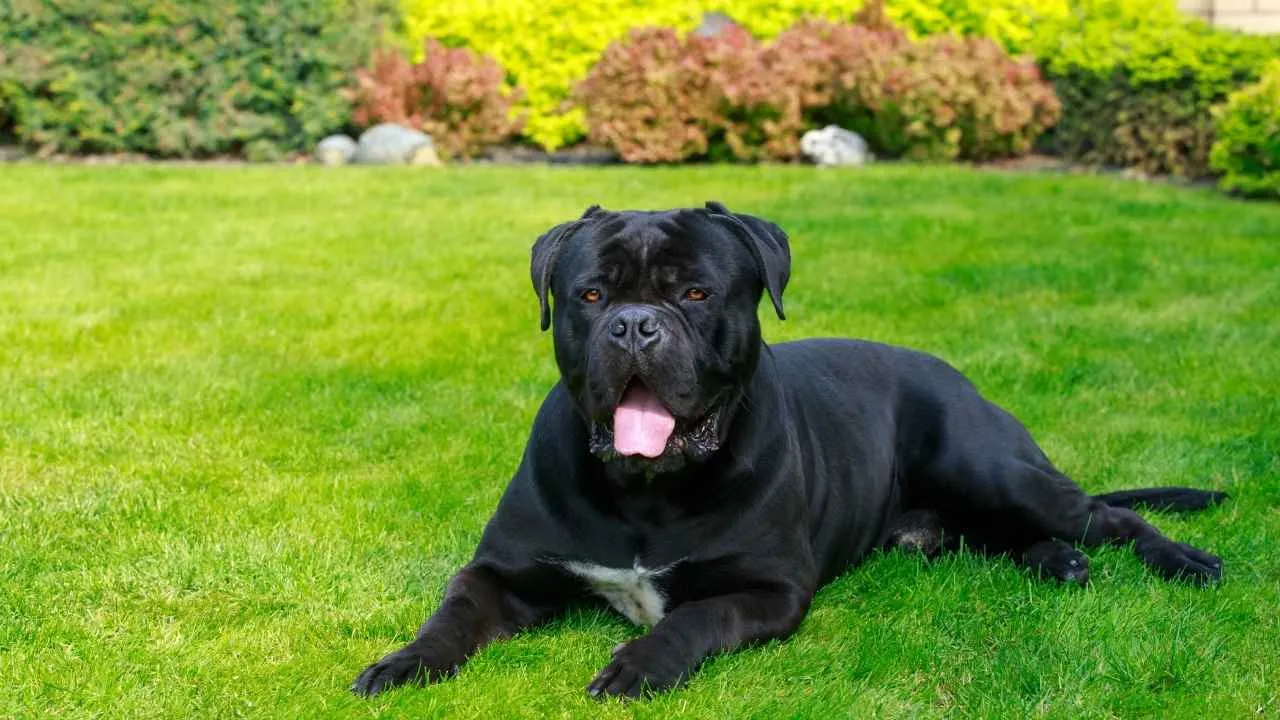
The Cane Corso traces its roots to ancient Italy, descending from Molossian war-dogs once deployed by Roman legions for guard and battle duties, adds Britannica.
Today, it still carries that legacy in its robust build, exceptional strength, and devotion to its human pack. The Cane Corso is a powerful yet intelligent breed, known for being eager to please, versatile, and deeply loyal to its family.
At the same time, they can be strong-willed, which makes early training and socialization with people and other pets especially important.
Like most large guard dogs, Cane Corsos thrive on regular exercise to keep their muscular bodies healthy and their minds engaged.
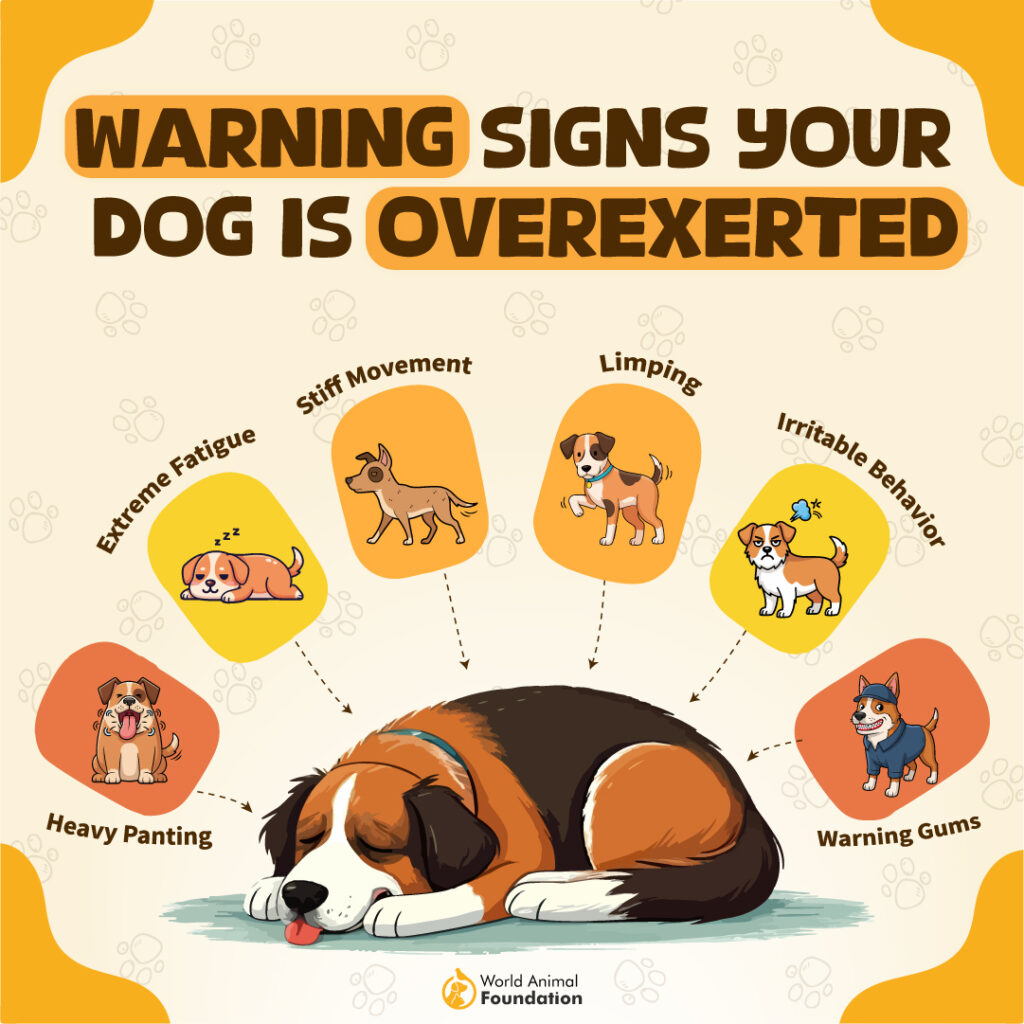
Physical Build & Agility: Muscular, low center of gravity, agile for its mass
Ideal Owner: Experienced, firm, consistent handler
Training Tip: Start early with obedience, socialization, and controlled exposure
Warning Sign: Overzealous guarding, reactivity without boundaries
Care Needs & Energy: Requires regular exercise, joint care, and mental stimulation
2. Dogo Argentino
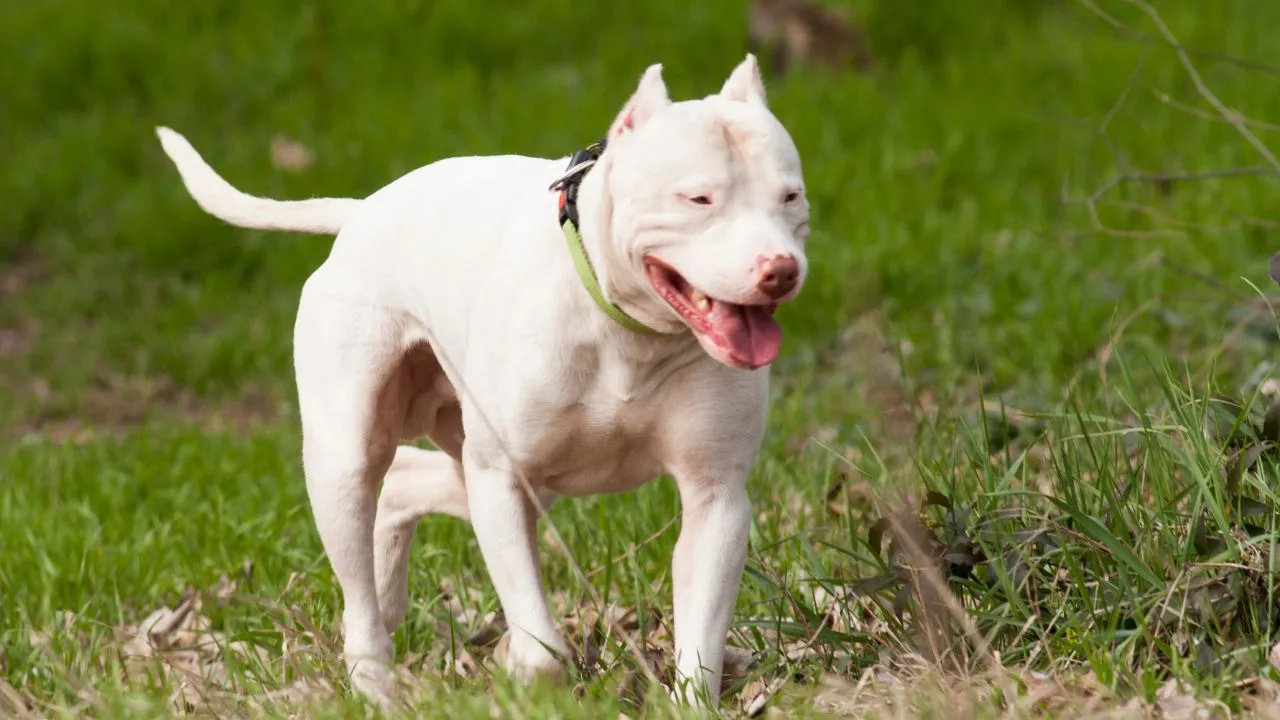
Developed in the 1920s in Argentina to pursue dangerous game like wild boar and puma, the Dogo Argentino combines elegance with raw hunting power, as AKC says.
Its strength lies not only in its musculature but in its drive, tenacity, and loyalty that make it well-suited for many roles. From search-and-rescue to military and police work—and even service dog duties—this breed thrives when given a job to do.
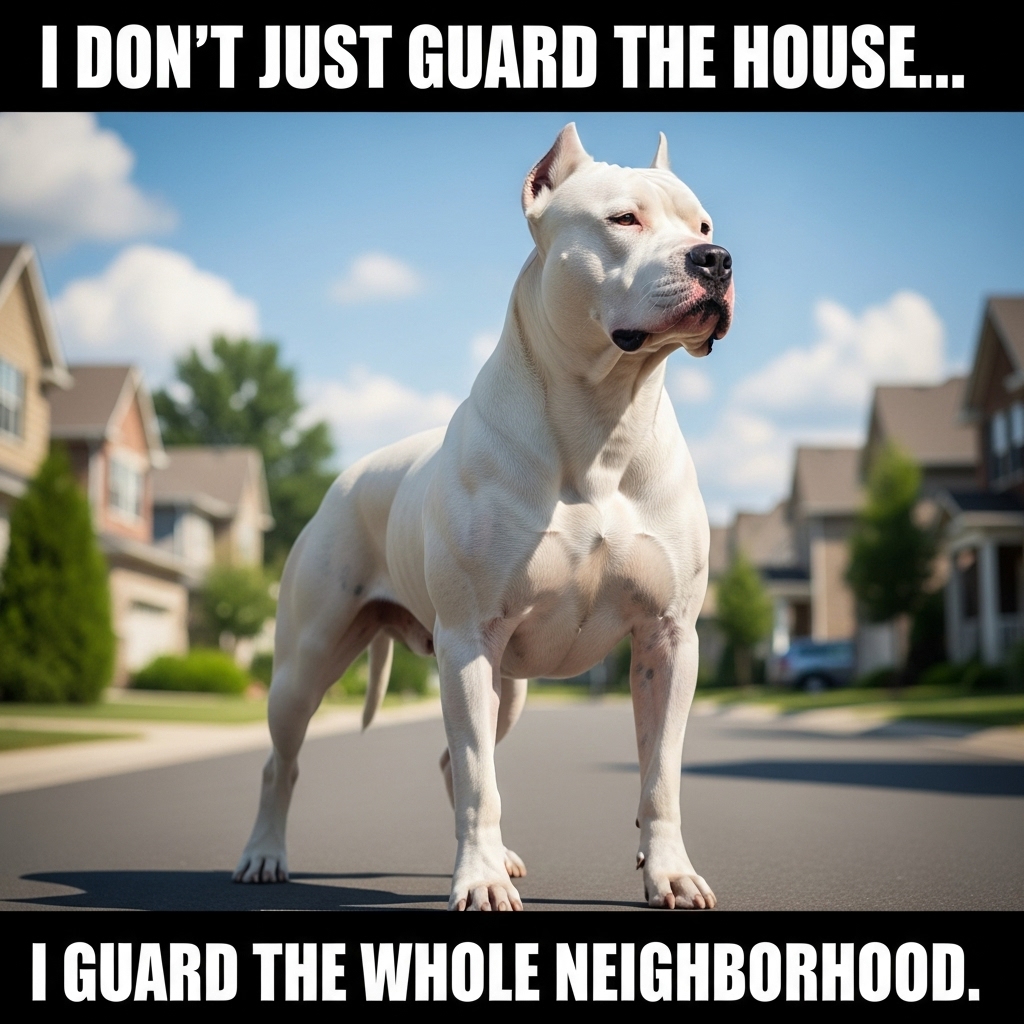
Despite their working drive, Dogos are also loyal, affectionate, and family-oriented. They love being included in household activities and can be playful and gentle with the people they love.
This isn’t a breed for first-time or laid-back owners. The Dogo Argentino needs confident, experienced guidance and plenty of structure to bring out the best in their loyal and loving nature.
Physical Build & Agility: Solid, athletic frame; built for endurance, jumps, and fast pursuit
Ideal Owner: Confident, consistent, active individual or family
Training Tip: Balanced reward-based training with firm boundaries and socialization
Warning Sign: Boredom or neglect can provoke destructive or overly assertive behavior
Care Needs & Energy: High daily exercise demand, regular health screening
3. Newfoundland Dog
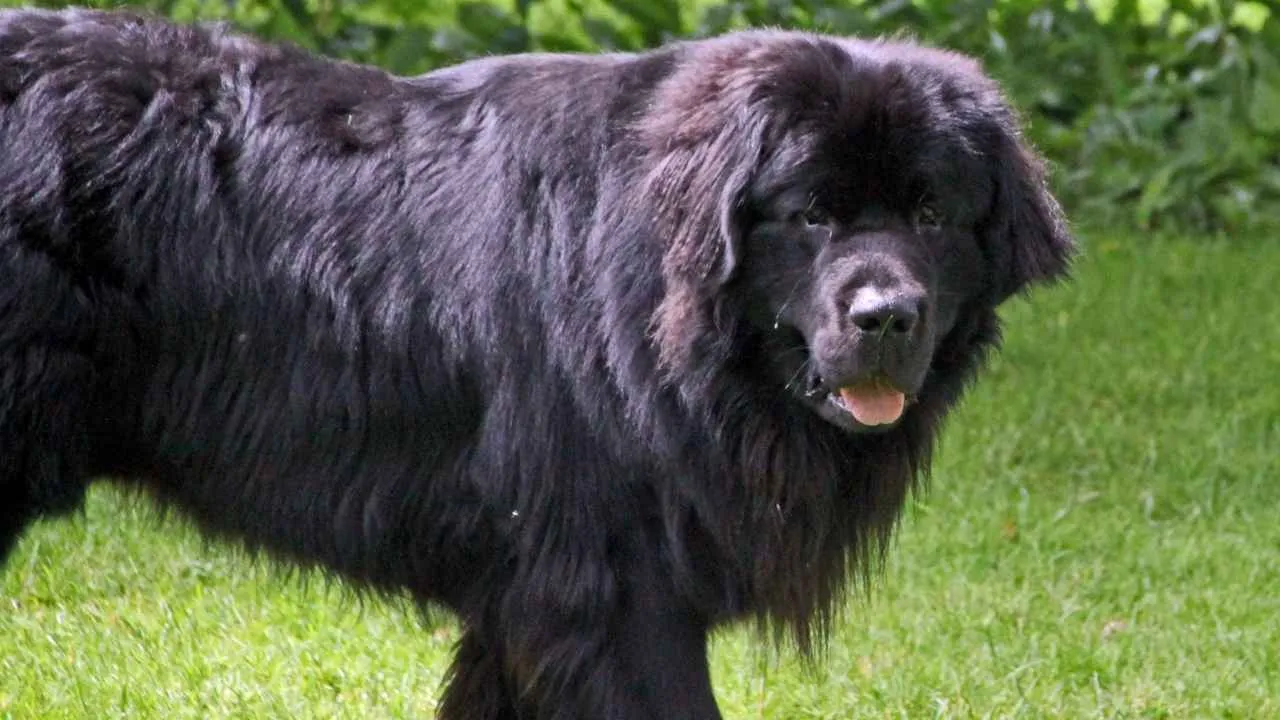
Originating in the rugged coastal environment of Newfoundland, Canada, the Newfoundland was bred to assist fishermen—hauling nets, pulling carts, and performing heroic water rescues.
Its combination of strength, endurance, and gentleness earned it renown as a “gentle giant.” Owning a giant breed like the Newfoundland comes with extra responsibility—everything from food and veterinary care to boarding and even bedding costs more when your dog weighs over 100 pounds.
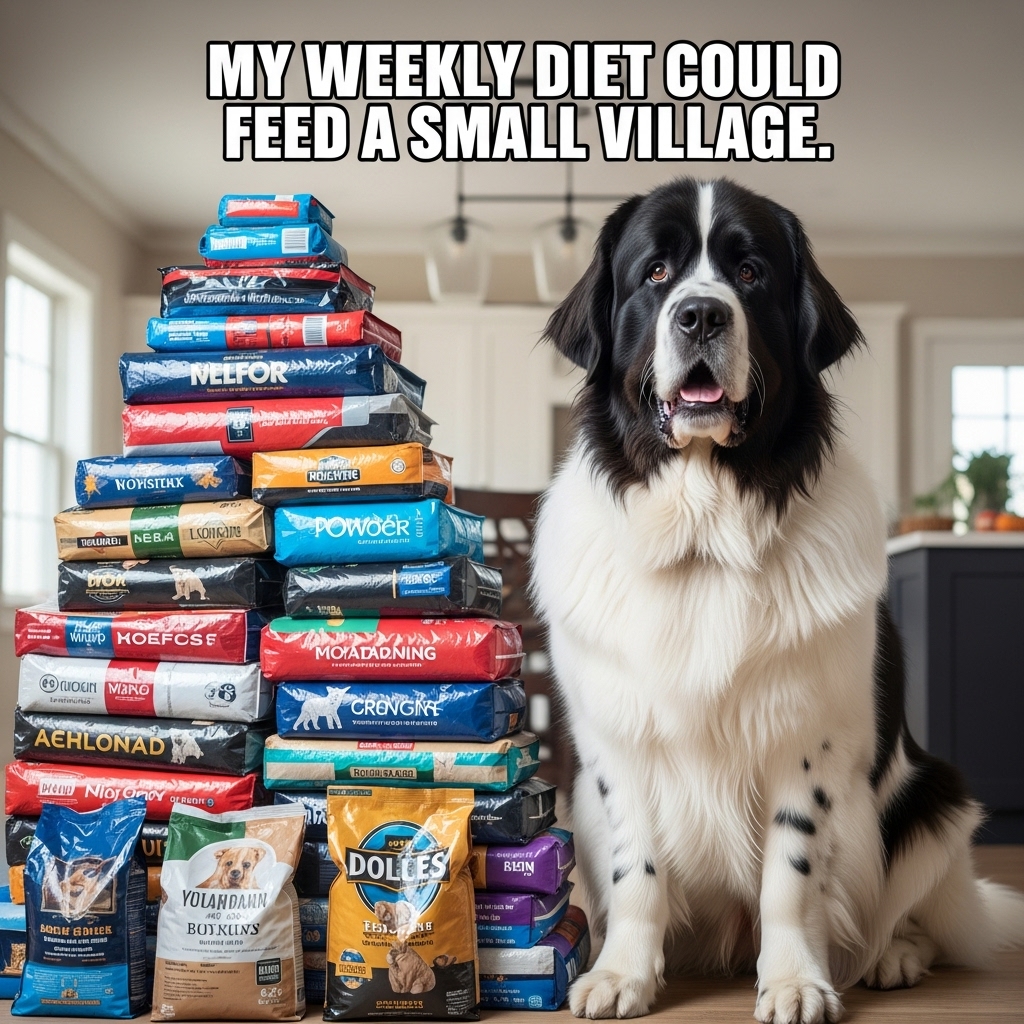
You’ll also need enough space at home (and even in your car) to comfortably accommodate their massive size.
Despite their bulk, Newfoundlands don’t demand endless exercise. A moderate daily walk or a short play session is usually enough to keep them happy and healthy.
Physical Build & Agility: Massive, muscular body; webbed feet, water-resistant coat for swimming
Ideal Owner: Patient, spacious home, calm environment, with a willingness to groom and train
Training Tip: Gentle, consistent positive reinforcement; early socialization around water
Warning Sign: Joint issues or overexertion in youth; avoid high-impact activities in puppies
Care Needs & Energy: Moderate exercise (swims, walks), heavy grooming, attention to joints
4. Great Pyrenees
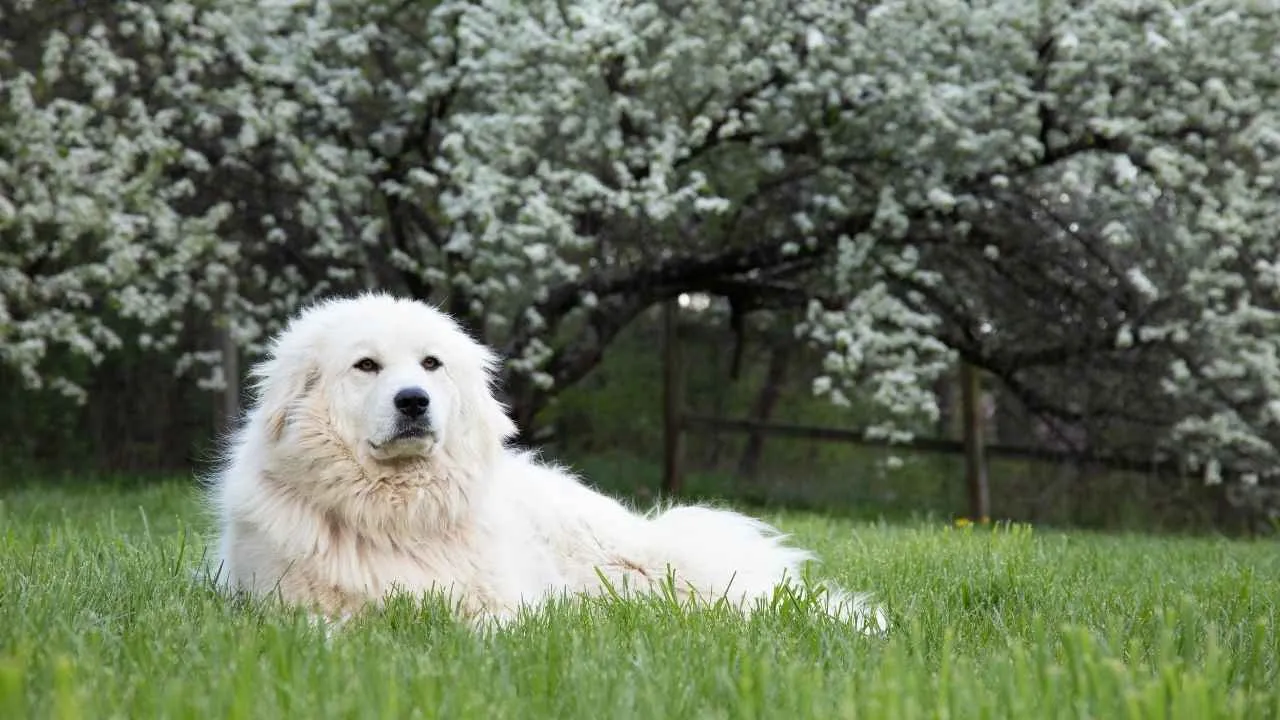
The Great Pyrenees is an ancient livestock guardian breed, long employed by shepherds in the Pyrenees Mountains to deter wolves, bears, and intruders.
The Great Pyrenees is a loyal and devoted guardian, known for being gentle and affectionate with family yet naturally cautious around strangers.
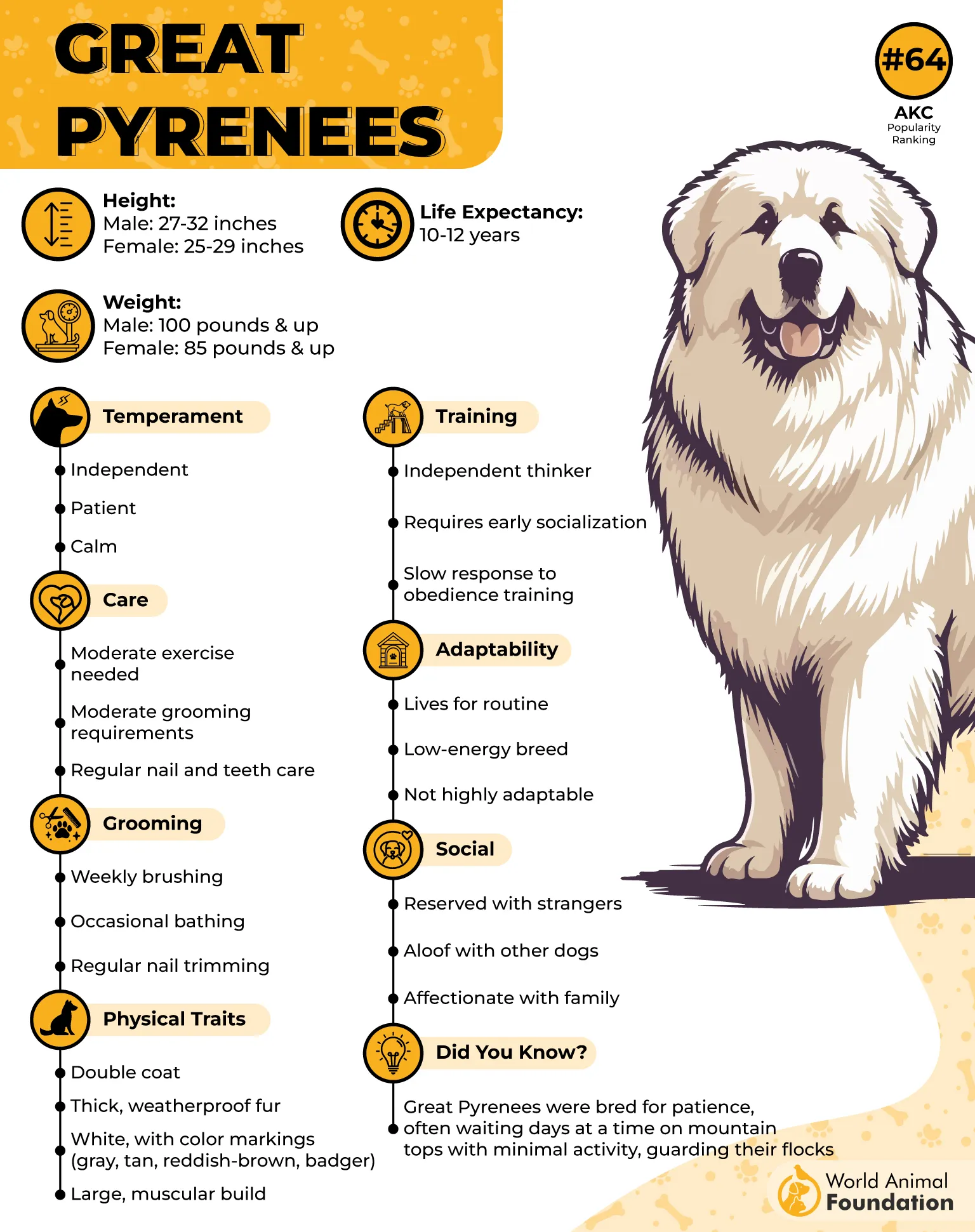
True to their heritage as guarding livestock, they thrive when given a job—whether it’s watching over animals, keeping an eye on the kids, or even pulling a cart. Having a purpose gives the Pyr a sense of pride, and they take their duties seriously.
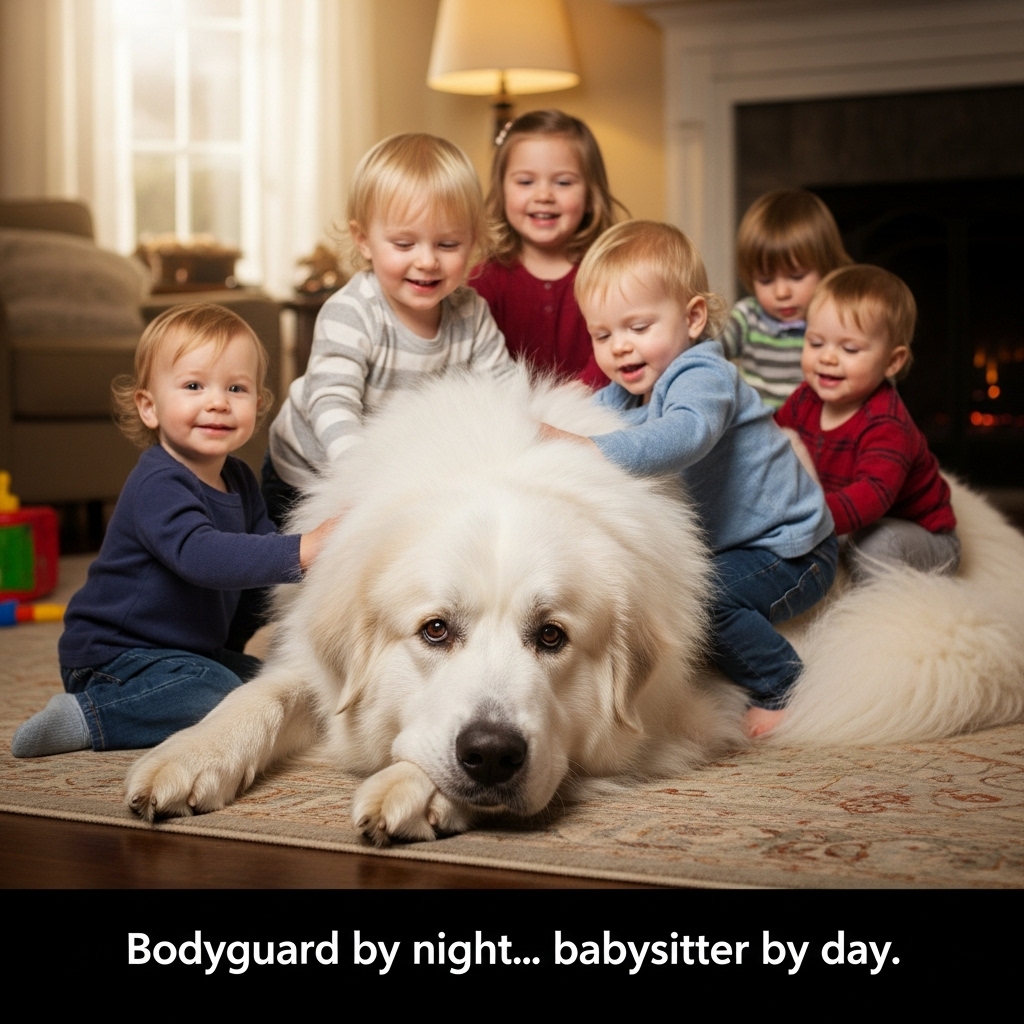
These majestic dogs are steady, calm, and highly intelligent. But don’t expect instant obedience—Pyrs were bred to think independently, which can make training a challenge.
Physical Build & Agility: Tall (up to ~32 in), heavily boned, weatherproof double coat, surprisingly nimble for a guardian breed
Ideal Owner: A handler experienced in large guardian breeds, accustomed to independent thinking
Training Tip: Use firm, consistent methods; early socialization to reduce territorial reactivity
Warning Sign: Over-protectiveness, wariness of strangers, stubborn refusal to yield
Care Needs & Energy: Moderate daily exercise, grooming for heavy shedding, joint monitoring
Energy Demands: Steady stamina, more than bursts of speed
5. Bernese Mountain Dog
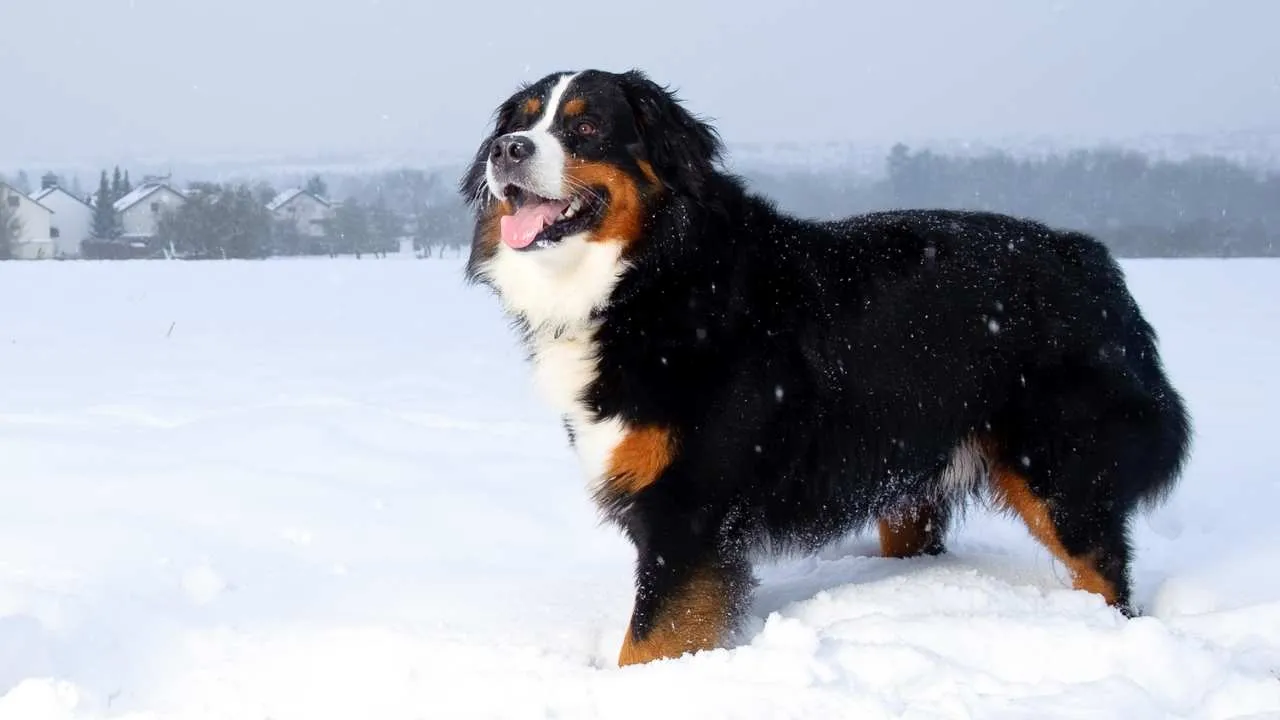
Hailing from the Swiss Alps, the Bernese Mountain Dog was historically used for farm work: pulling carts, driving cattle, and guarding property.
While not typically a speed demon, it demonstrates impressive strength, endurance, and reliable temperament in demanding conditions. Bernese Mountain Dogs may be big, but they’re true family companions who belong indoors with their people.
They especially thrive in cold weather and love outdoor adventures—whether it’s hiking, camping, backpacking, or romping joyfully in the snow.
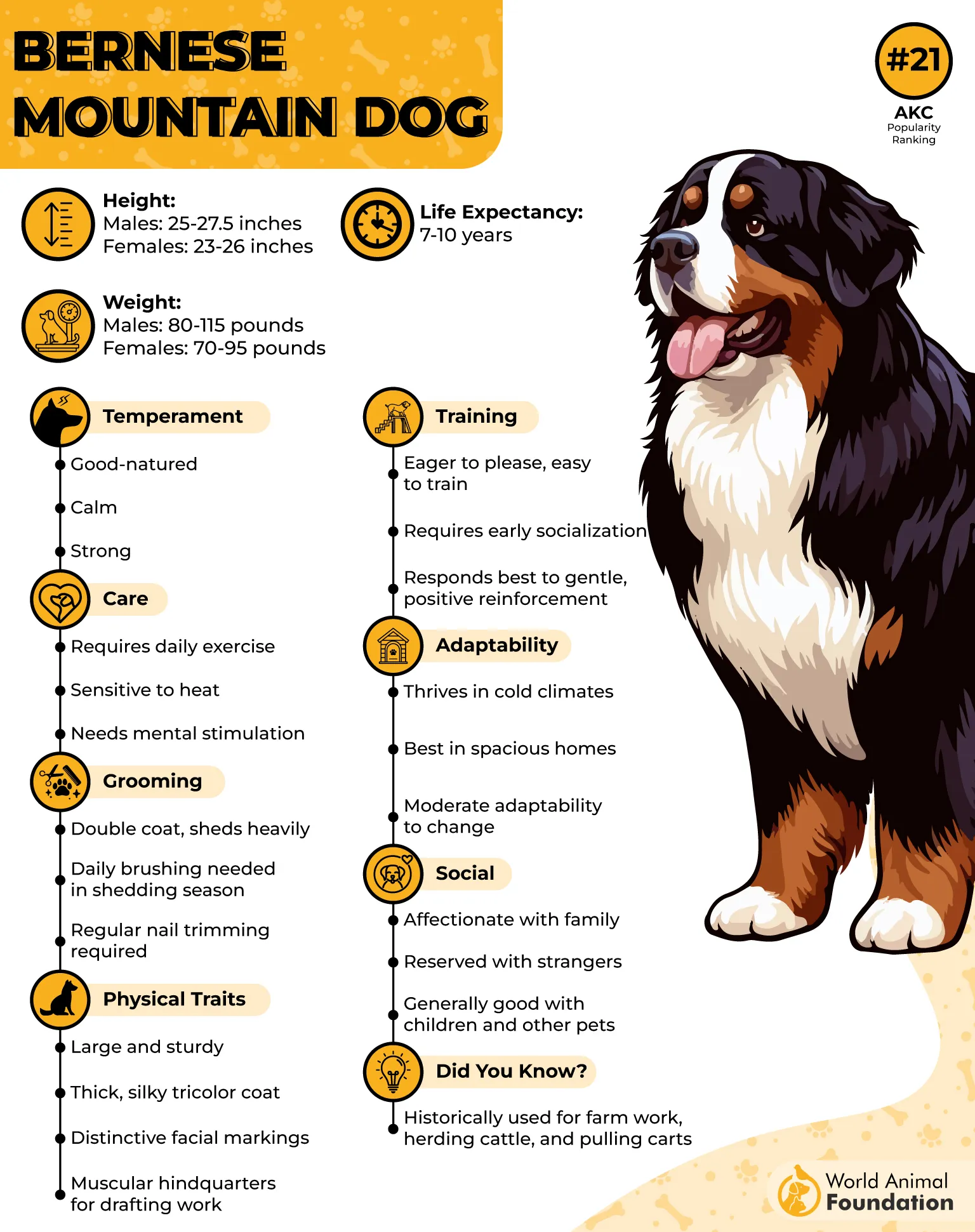
Known for their gentle and affectionate nature, Berners are wonderful with children. Still, their large size means they can be a bit overwhelming for toddlers or very young kids.
Their thick double coat is beautiful but comes with heavy shedding, especially during seasonal coat changes. Families with allergies may want to consider this carefully before bringing a Berner home.
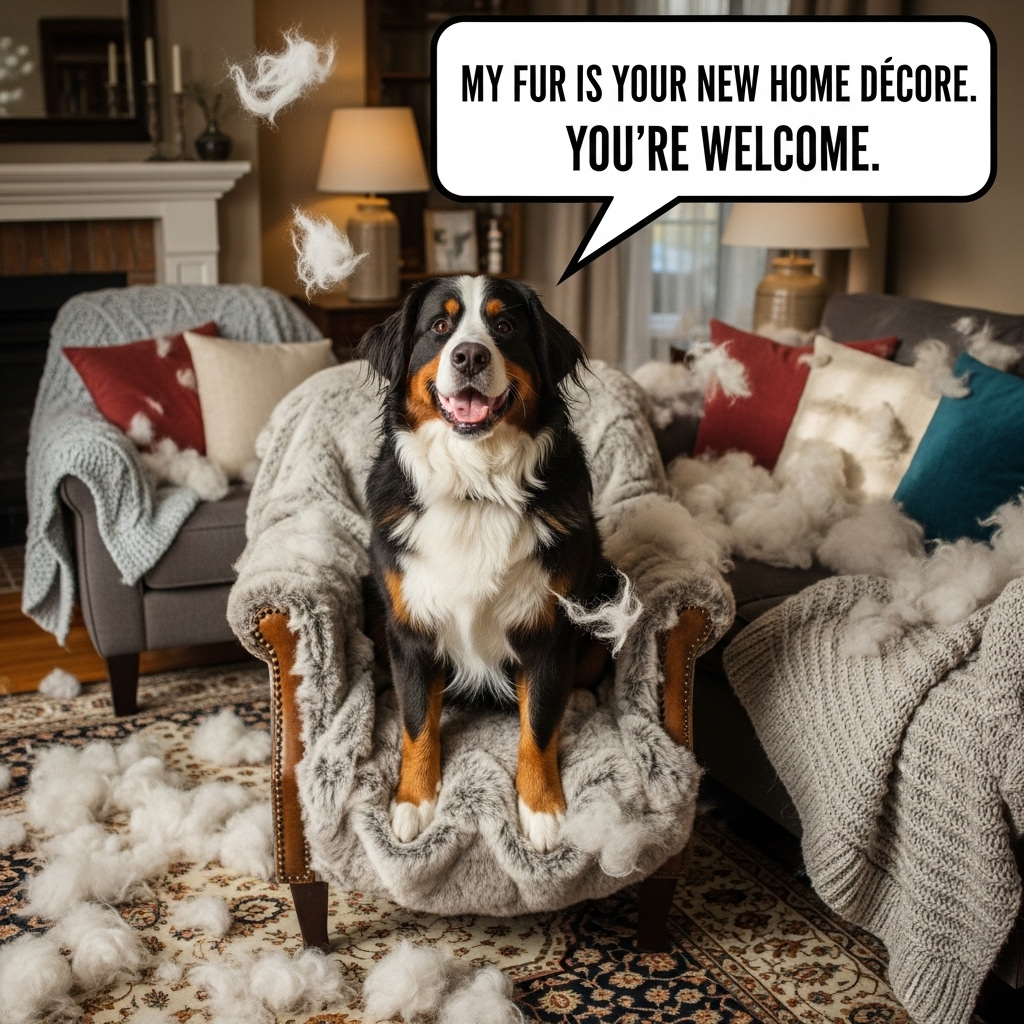
Physical Build & Agility: Solid, muscular frame with sturdy bones and moderate agility for its mass
Ideal Owner: Someone with patience, space, and understanding of large dogs
Training Tip: Gentle positive reinforcement, steady obedience training, and social exposure early
Warning Sign: Overexertion, joint stress in youth, susceptibility to bloating, and cancers
Care Needs & Energy: Daily moderate activity, attention to heat and joints, heavy brushing
Energy Demands: Consistent work or exercise rather than intense bursts
6. Anatolian Shepherd
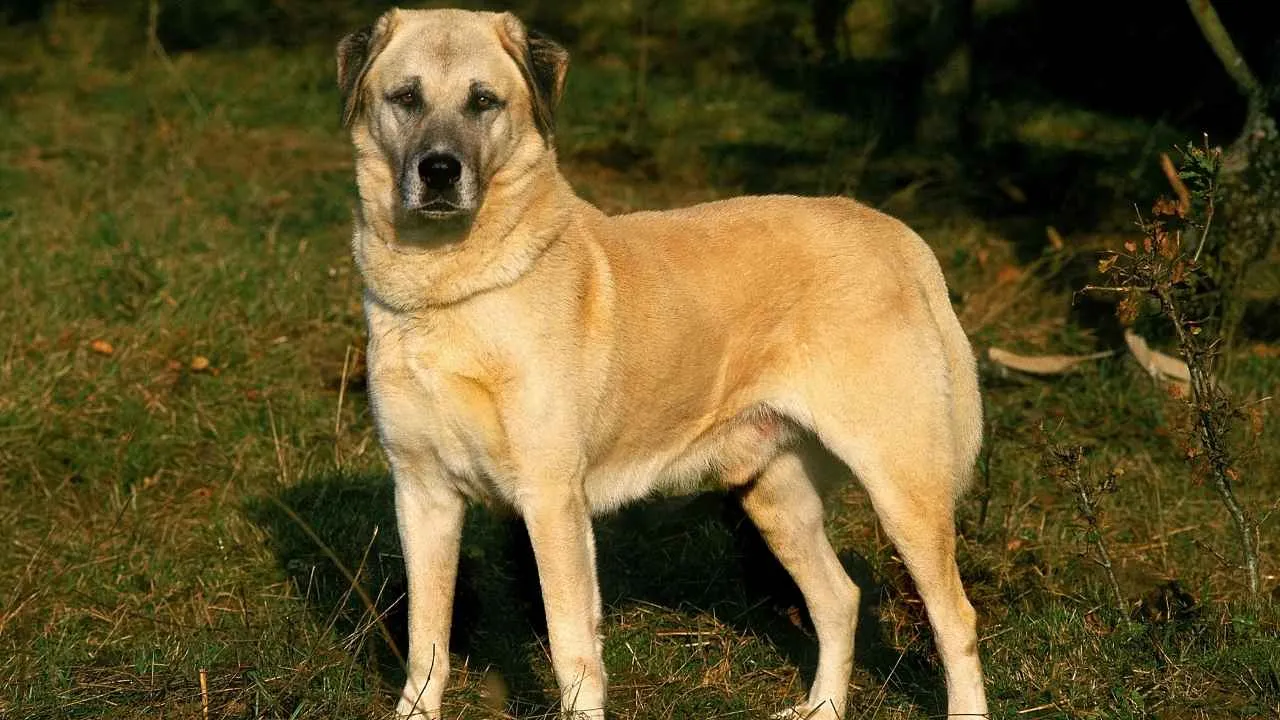
One of the oldest known guardian breeds, the Anatolian Shepherd originated in central Turkey, where it protected flocks from wolves, bears, and even big cats for over two millennia.
Its reputation rests on enduring stamina, independence, size, and fierce loyalty. The Anatolian Shepherd is a bold, independent guardian bred to think and act on its own.
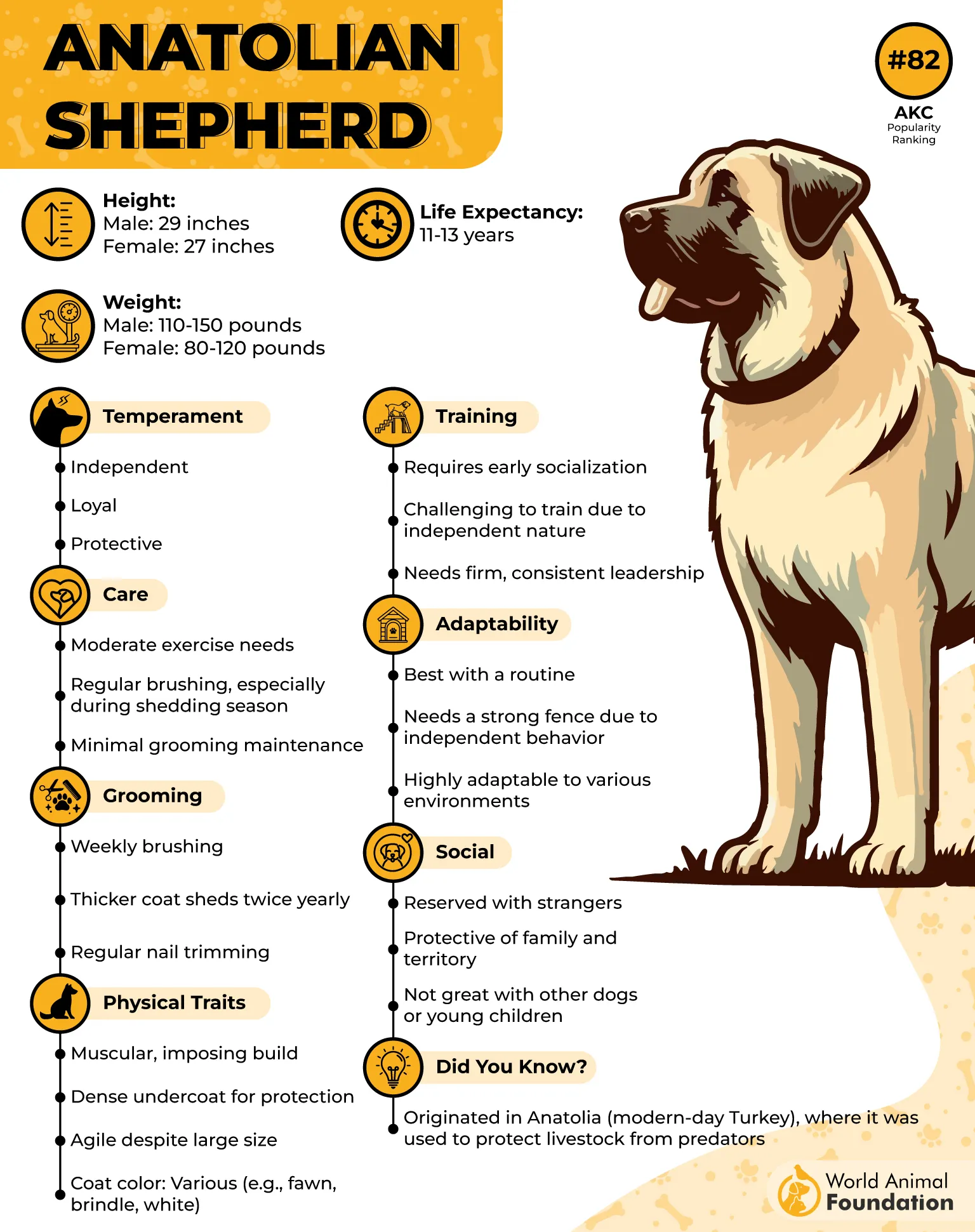
These strong-willed dogs need confident owners who can provide clear guidance and leadership. Without it, they may try to take charge themselves, making them a real challenge to manage.
With proper training and early socialization, however, Anatolian Shepherds become calm, steady companions who are deeply loyal and protective of their families.
Physical Build & Agility: Medium to large, rugged frame built for endurance, quick over terrain despite bulk
Ideal Owner: A seasoned handler comfortable with independent, strong-willed breeds
Training Tip: Use early, consistent boundaries and leadership; socialization is crucial
Warning Sign: Erratic guarding, distrust of unfamiliar people if not properly socialized
Care Needs & Energy: Moderate to high daily activity, minimal grooming, protect joints in youth
Energy Demands: Long, steady patrol or guard work rather than short aggressive bursts
7. Doberman Pinscher
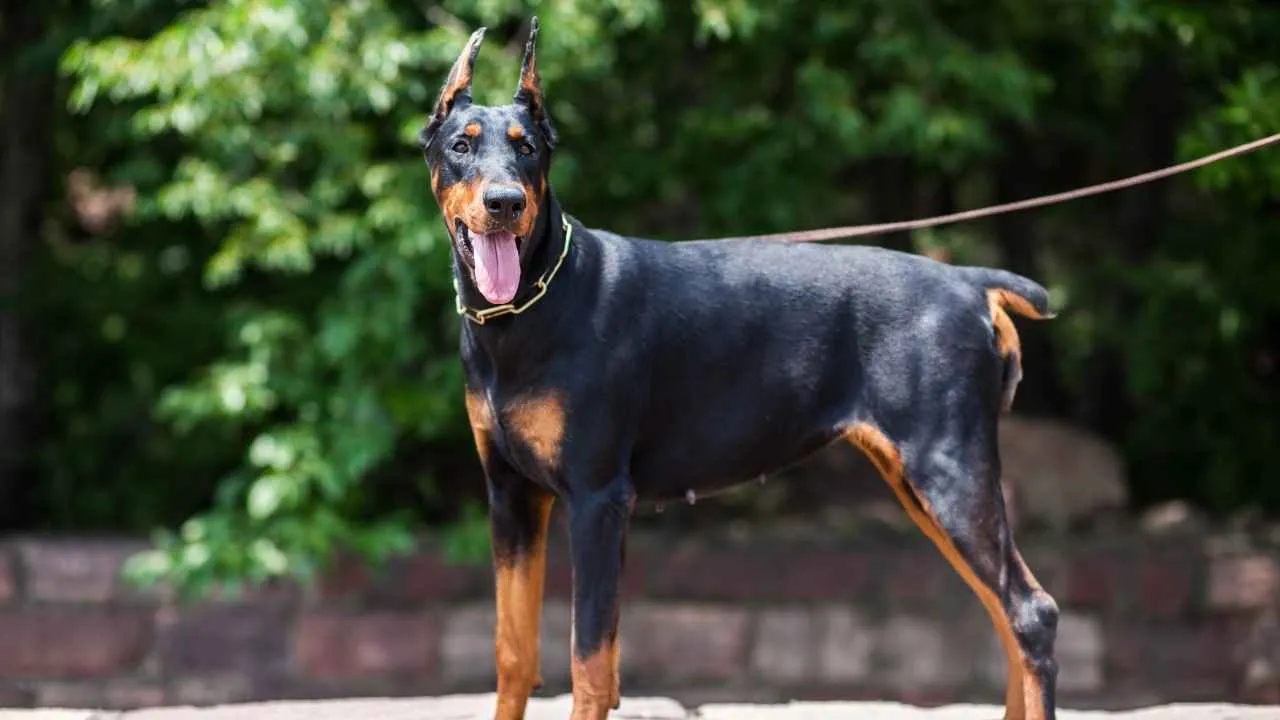
The Doberman Pinscher was developed in late-19th-century Germany by Karl Friedrich Louis Dobermann, who sought a dog combining intelligence, fearlessness, and physical strength for protection work.
Over time, the breed became a paragon of versatility—as adept in agility, police, and guard roles as it is loyal to its household. Doberman Pinschers are energetic, intelligent, and curious dogs who thrive on an active lifestyle.
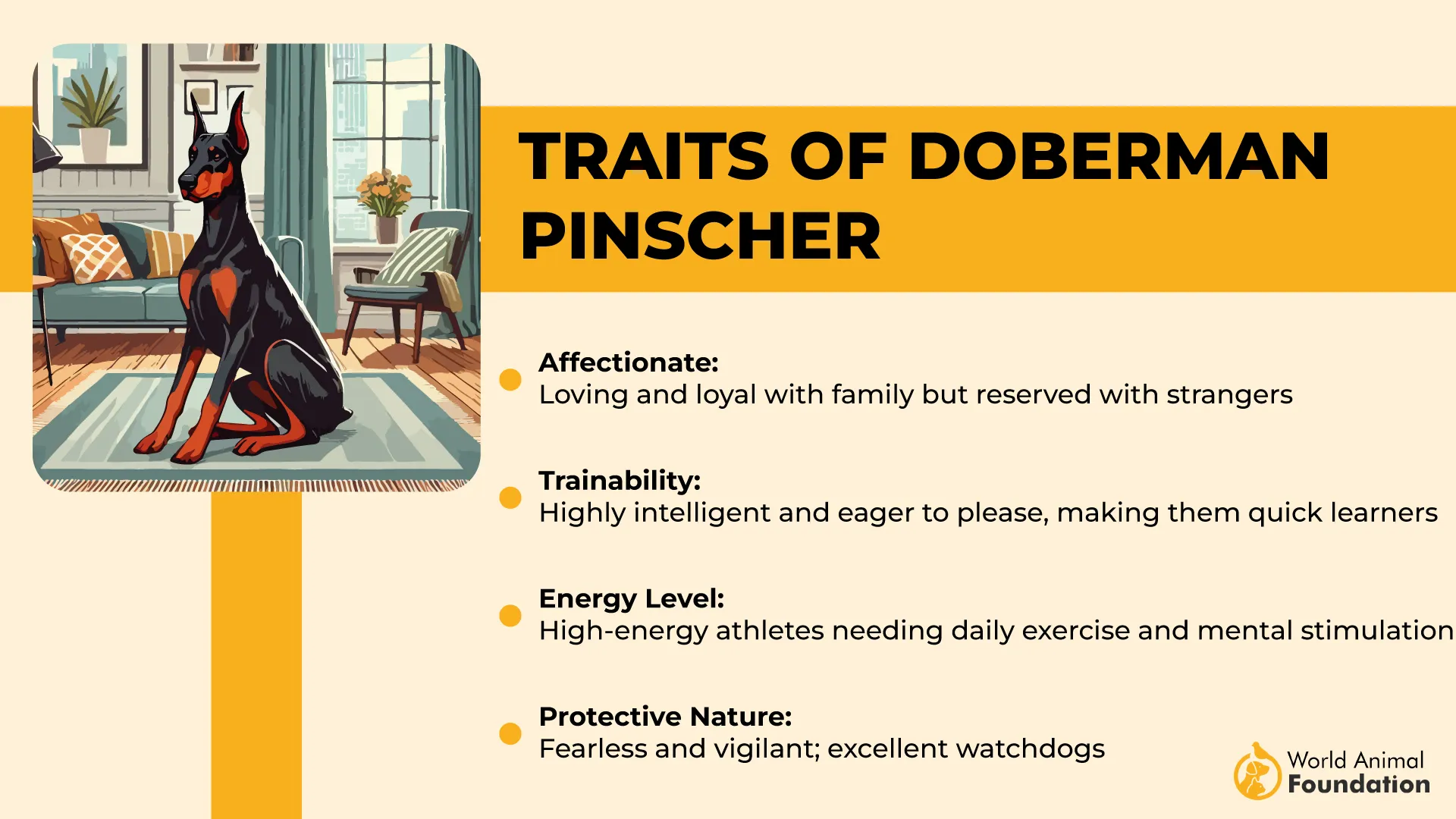
Famous for their loyalty and devotion, Dobermans bond deeply with their families. This strong attachment can also make them naturally cautious around strangers, which, paired with their alertness, contributes to their reputation as excellent guardians.
Because of their strong prey drive, Dobermans may not be the best fit for households with smaller pets. They should always be kept on a leash or in a secure, fenced yard outdoors—otherwise, that neighborhood squirrel might just become their next target.
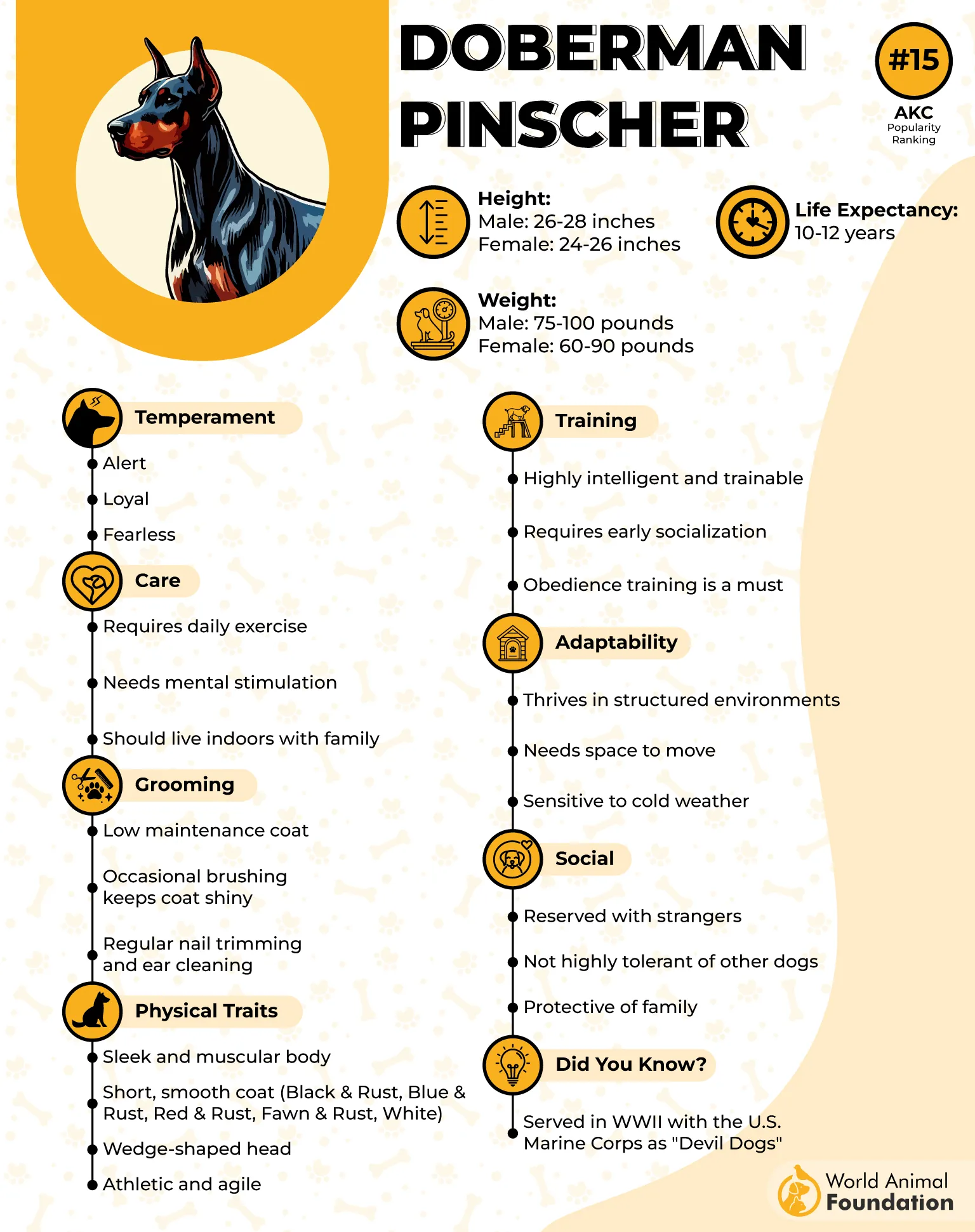
Physical Build & Agility: Lean yet muscular frame, excellent speed and agility under control
Ideal Owner: Competent trainer comfortable with a strong-willed, energetic breed
Training Tip: Begin early with obedience, focus, and structured agility work
Warning Sign: Anxiety, reactivity, or dominance behaviors when understimulated
Care Needs & Energy: High daily exercise, mental challenges, monitor joint health
Energy Demands: Sustained work/athletic activity over long play bouts
8. Scottish Deerhound
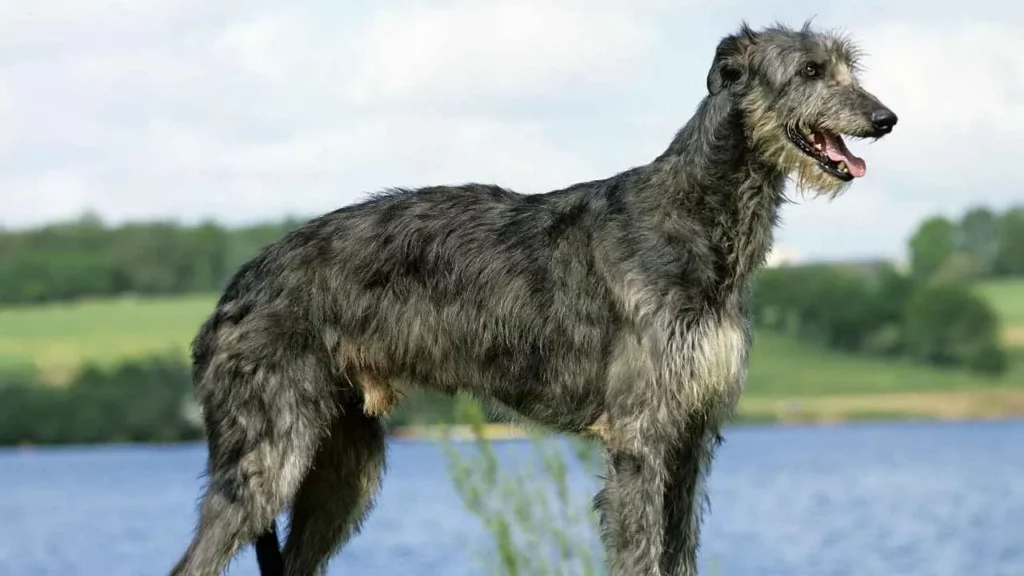
The Scottish Deerhound dates back centuries in Scotland, where it was prized by nobles to chase and course red deer across moors and glens.
Despite its height and elegant silhouette, it retains surprising strength and stamina, capable of long runs over uneven terrain, as mentioned by WebMD. The Scottish Deerhound is a gentle, loyal companion, but it’s not the right match for every household.
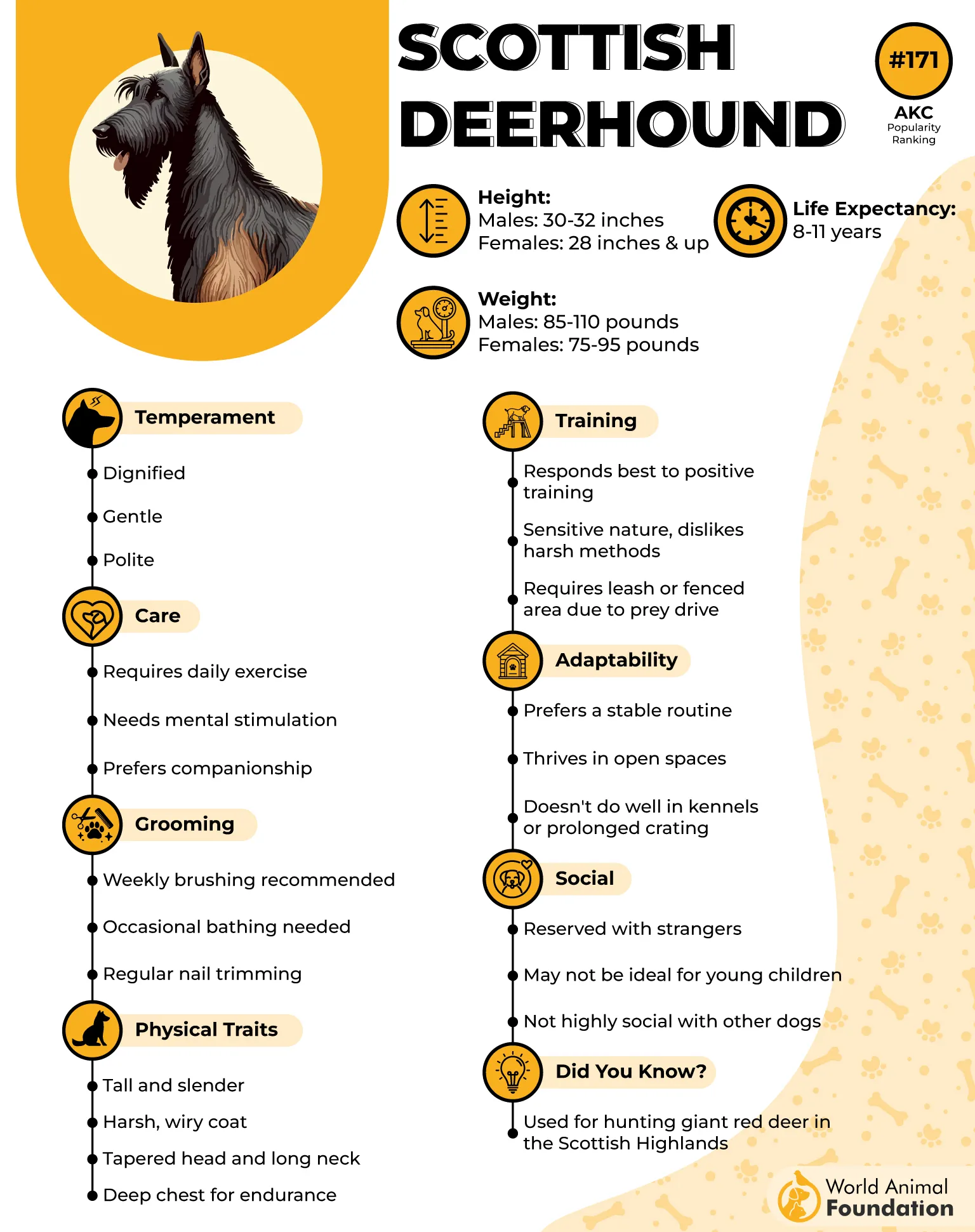
True to their heritage as coursing hounds, they love to chase, yet don’t expect them to enjoy a game of fetch. While devoted to their families, they aren’t natural watchdogs and may not sound the alarm when strangers approach.
These majestic dogs also need much more than a quick walk around the block. With their incredible stamina and love of open spaces, Deerhounds thrive when given the chance to run freely and stretch their long legs. For active owners with plenty of room, they make affectionate, noble companions.
Physical Build & Agility: Tall, robustly boned sighthound with wiry coat; excels in endurance over speed
Ideal Owner: Someone with calm confidence and experience handling large, independent breeds
Training Tip: Use gentle reinforcement, short sessions; harness its prey drive positively
Warning Sign: Cardiac issues or overexertion risk, especially in later years
Care Needs & Energy: Requires regular running, prey-drive outlets, and grooming for a rough coat
Energy Demands: Moderate to high stamina rather than bursts of explosive speed
9. Weimaraner
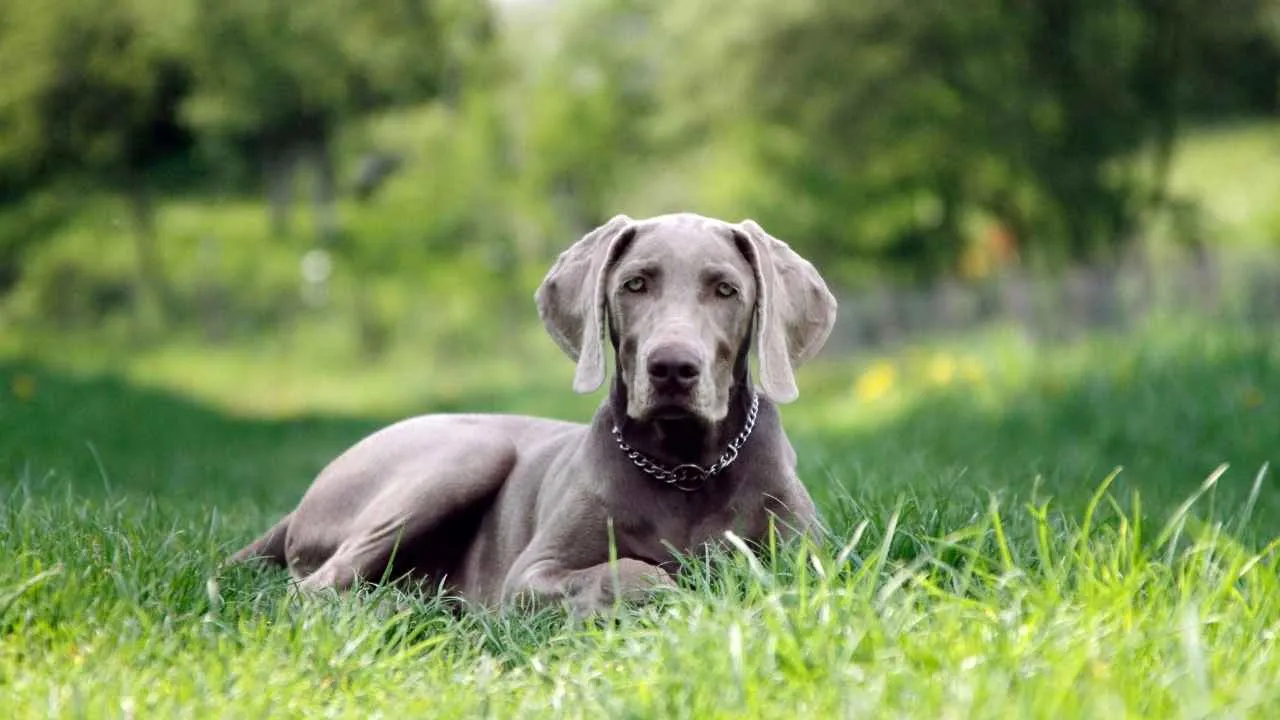
Originating in early 19th-century Germany at the court of Weimar, the Weimaraner was developed as an elite hunting dog tasked with tracking and retrieving large game, claims Hillspet.
Its reputation rests on a blend of speed, courage, and unwavering stamina—traits still evident in agility and field disciplines today. With their long legs and tall, graceful build, Weimaraners are notorious “counter-surfers” who can easily sneak a snack off the kitchen table if you’re not paying attention.
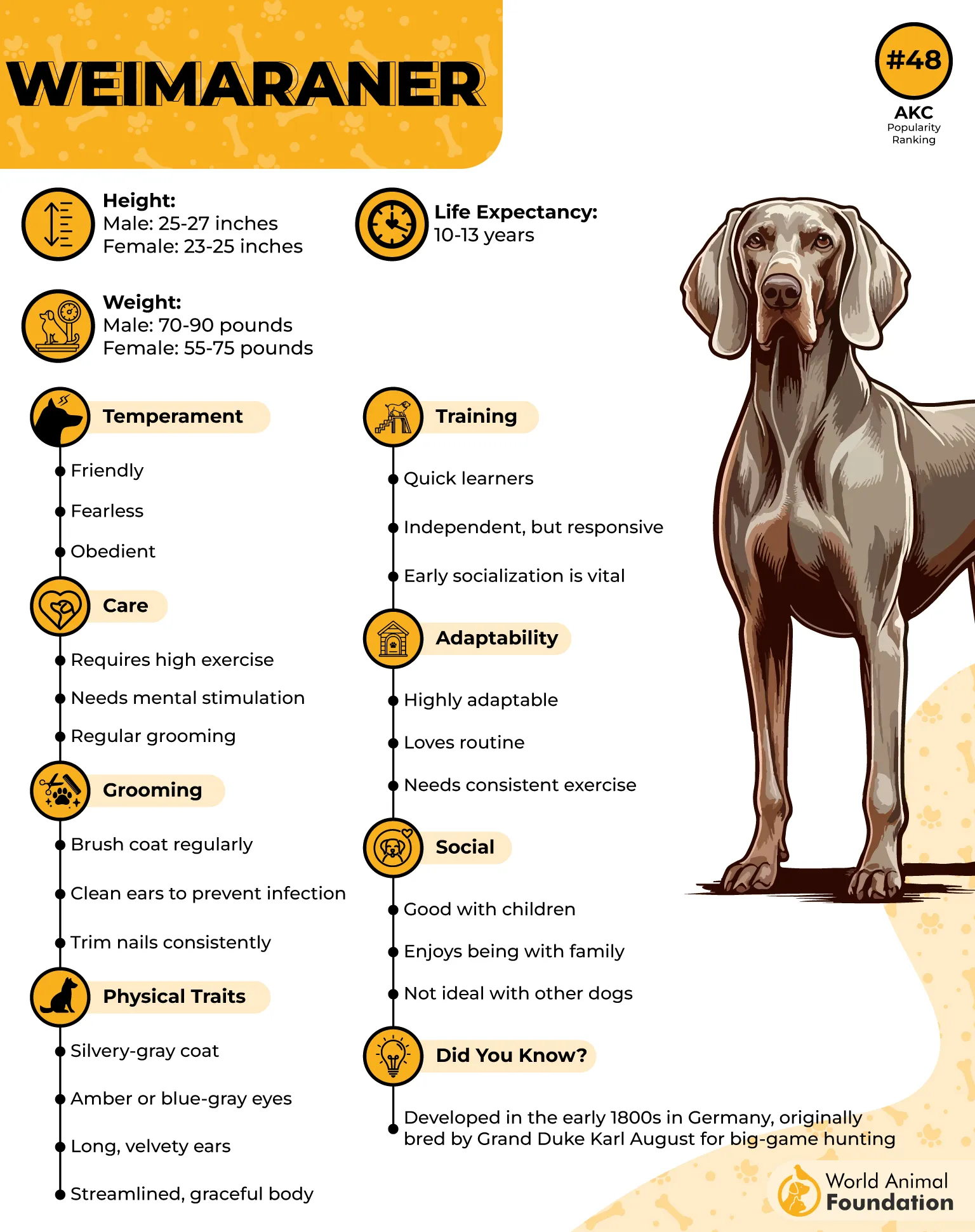
Beyond their mischief, Weimaraners are affectionate, loyal, and highly trainable, which makes them wonderful family dogs. They’re also bursting with energy and thrive on plenty of exercise, mental stimulation, and quality time with their people.
Left without enough activity or attention, they may turn that cleverness into unwanted mischief—so this is a breed best suited for active families ready to keep up.
Physical Build & Agility: Sleek, powerful body with long reach and efficient movement
Ideal Owner: Active handler who can meet high physical and mental demands
Training Tip: Combine structured field work, agility drills, and scent training
Warning Sign: Restlessness, frustration, destructive behaviors if under-exercised
Care Needs & Energy: Daily intense exercise, mental challenge, joint health monitoring
Energy Demands: High — it thrives with continuous, stimulating work rather than slumps
FAQs
1. Are heavyweight dog breeds suitable as family pets?
Yes, many heavyweight dog breeds are great family pets thanks to their loyal and surprisingly gentle nature. With proper training and socialization, they can be affectionate, protective, and form strong bonds with children. Their large size means they need space and consistent guidance.
2. Do heavyweight breeds face unique health challenges?
Yes, large dog breeds often face joint issues, heart problems, and shorter lifespans due to their muscular build and giant size. Regular vet care and consistent training help manage these risks. Keeping weight balanced is essential.
3. How much food do heavyweight dogs eat daily?
Most dogs of this size need 4–8 cups of high-quality food, depending on shoulder weight, activity, and muscle mass. Working dogs or those pulling heavy loads may require more. Always follow a vet’s nutrition plan.
Conclusion
Some of the strongest dog breeds we covered show off muscle, stamina, and a surprisingly gentle side. But plenty of other dogs—like the English Mastiff, Great Dane, or Irish Wolfhound—also earn their place among the heavyweight champions of the dog world.
These big dogs, often originally bred for guarding or pulling heavy loads, now share their deep bonds with families, children, and even other animals. With proper training and care, their giant size comes with a calm personality and loyal heart.
Love learning about large dog breeds? Stick around—our blog has more on these affectionate, highly trainable, and incredibly friendly pups.


